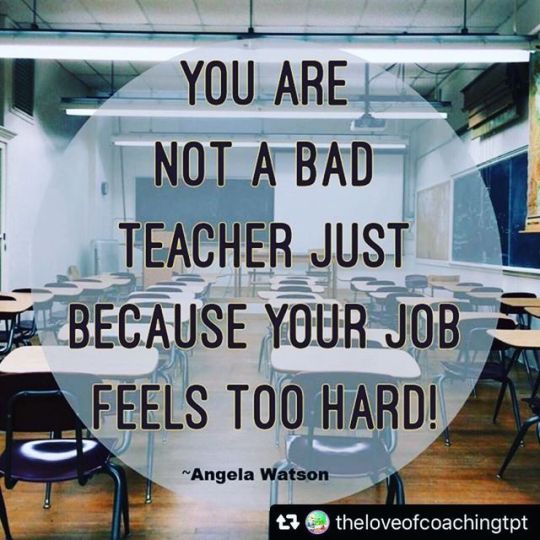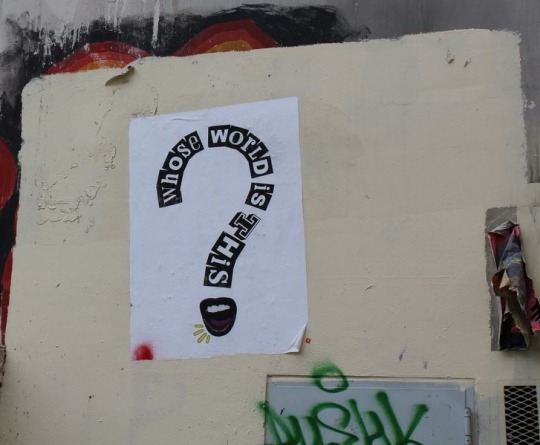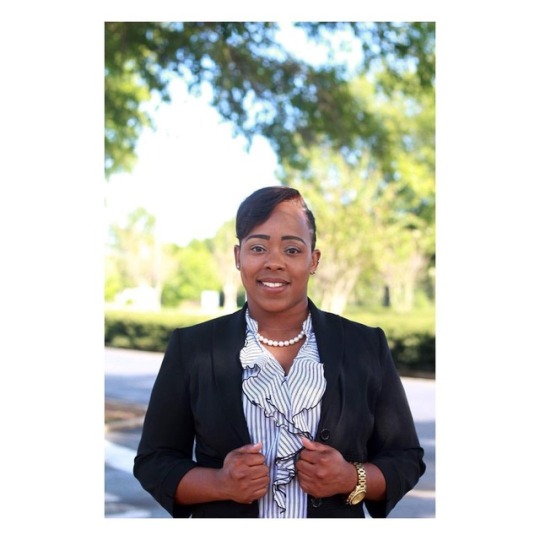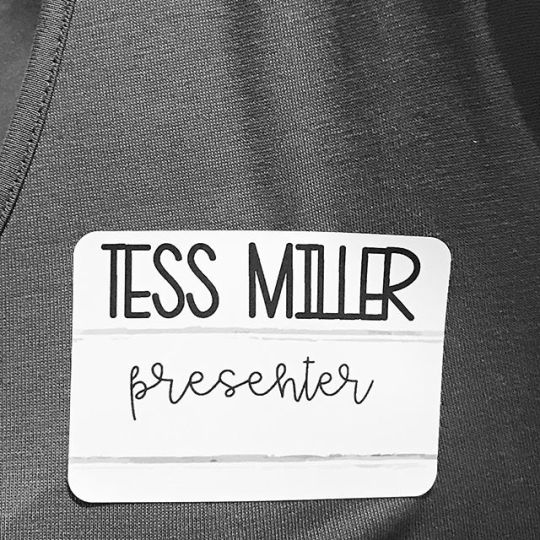#teacherleaders
Photo

A great reminder: . . #Repost @theloveofcoachingtpt with @repostsaveapp · · · I just finished reading a powerful article by Angela Watson that really resonated with me. Some of us may be barely making it to the end of the school year and already dreading coming back in the fall. Some of us are dreading the end of the year because we worry about the challenges our students will face over the summer! . Let’s be honest teaching is hard! There are days when you have given your all and it still doesn’t feel like enough. You may be at your breaking point and feeling as though you are not a good teacher or that you have failed in some way. . The fact that you are even thinking it - proves that you are a good teacher. You have not failed, only found what doesn’t work for you! . I encourage you this summer to write down every positive thing you can remember about this past year. Sometimes when we reframe our thinking we are able to see the light in the darkness. . Then take time for yourself, take time for your family because we need you! . #teachersofinstagram #teachersfollowteachers #teachertribe #iteachtoo #blessedteacher #makeadifference #thursdaythoughts #theloveofcoachingtpt #tiredteacher #teacherburnout #teacherwellbeing #primaryteachers #teacherleaders #endoftheyear #dontquit #youarenotafailure #weneedyou https://www.instagram.com/p/ByFmeNlhlVx/?igshid=14oryd1nqnndp
#repost#teachersofinstagram#teachersfollowteachers#teachertribe#iteachtoo#blessedteacher#makeadifference#thursdaythoughts#theloveofcoachingtpt#tiredteacher#teacherburnout#teacherwellbeing#primaryteachers#teacherleaders#endoftheyear#dontquit#youarenotafailure#weneedyou
0 notes
Photo


A Fellow team from Alta Vista High School in Kansas City, MO, designed their 2016 FFT grant to document in France experiences of the immigrant population to create authentic writing samples about displacement, immigration and identity that engage students' passions through a lens of cultural responsiveness. Below is an excerpt from the blog written by team member Sarah Geisler...
“I Am With Them”
I have been thinking about this phrase a lot in the last few days. On Tuesday, we saw an exhibition by photographer and documentarian Anne A-R at L’institut du monde arabe (the Arab World Institute) called “I AM with them.” It featured photos and stories of refugees from the Middle East. The artist visited several refugee camps in Europe, roughly following the succession of camps one would encounter on the way to European countries.
We have struggled a bit with word choice while here. In our school projects (and in our grant proposal), we refer to “displacement” frequently, using it almost as a synonym for “immigration.” I realize now we must change that language, using the more precise terms of “migrant” (someone moving for economic reasons) and “refugee” (someone moving for safety reasons). Throughout our trip, we have looked primarily at migrants - immigrants coming to France for work. The current refugee crisis, however, begs some of our attention; the experiences of these people cannot be ignored.
I cried in the museum. If you know me well, you know that this isn’t saying much. But Mary Claire and Mike can vouch for the emotional weight of the photos and stories: 70-year-olds leaving their homelands; the individuals who have been injured in war and are carried by their friends across countries; people my age who left their sweethearts in Syria and know they’ll never seen them again; 12-year-olds who can express their hatred of war and hope for the future; toddlers who are somehow surviving freezing temperatures, illness and little food. The exhibit moved me in a way few stories about the refugee crisis have. To hear their own words, to look into their eyes, to realize how easily I could have been born into that life instead of my own - it’s hard to ignore the suffering.
Because I’m no different from them. I simply live on a different piece of land.
In the last ten days, we have seen a variety of perspectives on immigration in France: museums dedicated to the history of people along the Mediterranean and in Arabia, as well as the history of immigration in France; the Grande Mosquée of Paris; various immigrant neighborhoods and markets in Marseille and Paris; and the generous people we interviewed. Through all of these lenses, I still see my findings from a previous post.
Our similarities are greater than our differences.
In the words of IAU College professor Yumna Masarwa, “I don’t care if you’re orange, blue, black, white or green.” She says she works to fight stereotypes and show her American students in Marseille just how similar they are to people who seem to come from another world. Yumna talked to us a lot about the “otherness” felt by second-generation Muslim immigrants in France. According to her, these self-identified “Beurs” are Muslims who were born and raised in France, who speak French and don’t speak Arabic, who have seldom or never been to the country of their ancestors, who embrace western values, yet who are still not accepted by French society. They are considered not fully French, perhaps reflecting their separation from or invisibility within the dominant culture here, despite wanting to be a part of it. Yumna said this ostracization leads to the feelings of hurt and animosity toward Europe, ultimately contributing to the tension felt between France and its Muslim population.
And all of this makes sense. After all, haven’t we framed our fellowship around this distinction between French society and French Muslims? It’s so easy to see the differences and the problems they cause. As someone who loves traveling to new countries, I enjoy getting to know cultures foreign to me and studying our differences. But I’m starting to feel like we too often focus on the differences - positive or negative - rather than our common bonds.
According to Aboubakr Jamai, another IAU College professor, the media contributes to these divides. He called the current situation in France “poisonous;” Islam and France’s emphasis on secularism, immigration and terrorism are creating “perfect storm,” in his words, for the growth of extreme right-wing political rhetoric from the National Front. This anti-immigrant party has risen, in part, from the idea that Muslims and immigrants do not currently fit into the French identity. On Wednesday, we spoke with Simon, a Parisian native, who explained that France is facing almost an identity crises; do the French accept newcomers as they are, or do they force them to assimilate to French ideals (such as not wearing headscarves) in order to be considered French?
Essentially, the French are asking themselves, Who am I? And who are “we”?
Asking those questions through an us-versus-them lens, however, only serves to divide us - even though the separation is false. Yumna told of American students in her course this spring who met and spent time with Muslims in Marseille the day before the attacks in Brussels. When some of their classmates made anti-Muslim remarks after the attacks, the students defended the people they met. “They’re not to blame,” they said. “They’re just like us.”
We’ve seen these false divides even in the Euro Cup soccer tournament that has dominated our visit. The teams all have different colors, and we can differentiate the fans by jerseys on the street. Yet all of the chants and songs sound oddly similar and are even identical copies of what we sing at Sporting KC games.
It reminds me of the discussions I had with my high school students right after the Paris attacks. “Je suis Paris” was appearing all over social media, but we also looked at other atrocities with many people killed the same week that lacked the worldwide support we showed to Paris - simply because they were far away and involved people who looked different from us. As Aboubakr challenged, “How many people died in Paris - and how many people are dying daily in Syria?”
Our tunnel vision toward France – toward those who look and act like us – reflects the tangible connection between the United States and Europe. As much as Americans (and probably Europeans) might like to deny our bonds, the similarities are undeniable.
In terms of immigration, our experiences here have shown that America and France are mirror images.
History: Both countries saw immigration largely from European countries in the 19th century, which gave way to immigration from Central and South American, African and Asian countries in the latter 20th and early 21st centuries.
Economic Factors: Economy largely propels migration, meaning we are more willing to welcome immigrants when there are plenty of open jobs, whereas we look less favorably on immigration during economic slumps.
Borders: France relies on the Mediterranean Sea as a natural border. The United States has created its own border to control immigration from/through Mexico. At Musée national de l’histoire de l’immigration (the Museum of the History of Immigration in Paris), we saw an exhibit called “Frontières,” or “Borders.” The exhibit featured photos, documentaries, artifacts and many questions around the idea of borders – natural or constructed – between countries. Why do we create them? Why do we maintain them? What impact do they have on the people around them and those trying to cross them? The first section of the exhibit showed places in the world where man-made borders separate people: India/Bangladesh, Israel/West Bank, North Korea/South Korea…and the United States/Mexico. I felt embarrassed to have my country counted among those.
Joining the New Country: In the US, we often stress the importance of assimilation; immigrants, we have long said, must become like Americans in order to be accepted. This celebrates sameness over diversity, and it is similar to the “integration” process France emphasizes for its immigrants. Newcomers to France are expected to give up parts of their own heritage to look and act authentically French. In both countries, schools are the places where much of this assimilation/integration is supposed to happen. On a more basic legal level, both countries have strict laws regarding the status of immigrants. Papers have become a large issue in France, and I know firsthand the struggles people (students in particular) who are undocumented face in America. The countries put barriers in place to make it difficult to succeed there, if one is not supposed to. (Yumna said her African American and Latino American students who are studying abroad in Marseille often identify with Muslims in Europe; it struck me that my students might be much like the Beurs – second-generation immigrants who struggle with full acceptance into society, no matter how “French” or “American” they act.)
Negative Attitudes toward Immigrants: This is a big one and the topic in which we first saw reflections of America in France. In the United States, we often, especially recently, respond to immigration with fear and resentment; we have seen this same pattern in France. And just as Donald Trump has used inflammatory, anti-immigrant rhetoric to tap into those emotions in the US, the National Front has risen in France. Are these movements different from those we’ve seen in past decades and centuries? Are these negative attitudes new or simply finding a (rather loud) voice? Dr. Carl Jubran, the president of IAU College, claimed that the reason the richest countries in the world (UAE, Bahrain, etc.) accept few immigrants and refugees is that they are “more honest about their racism,” insinuating that countries like the US and France struggle with immigration because we refuse to admit our own biases. The part of me who believes in the goodness of humanity desperately hopes we are better than that, but the deeply hateful rhetoric – and support of that rhetoric – scares me.
This brings me to the phrase we saw painted on sidewalks, etched into schools (see photo above) and scrawled on walls across France: Liberté, Egalité, Fraternité – Liberty, Equality, Brotherhood. It’s the national motto of France and a nice post-revolutionary gesture, emphasizing the rights of the people and the importance of community.
But is it real? Is it possible? Carl lamented that in the West, we lean not toward brotherhood but instead, away from each other. By “othering” people, we treat them not only as unlike ourselves, but unlike humans. I see this in the United States and in France. Can the French really claim the importance of fraternité while denying access to or acceptance of newcomers? It goes directly against the third leg of their national values.
In the “Frontières” exhibit, the Museum of the History of Immigration asks, “Is a borderless world possible?” I have long struggled with the concept of national borders, seeing them as somewhat arbitrary and artificially constructed, serving only to create barriers between people. I would love to see a borderless world. After this trip and much reflection, though, it seems nearly impossible; there are so many histories, values, biases – so very many issues – that would prevent it. Similarly, the ideal of fraternité seems false and nearly unattainable for France and the United States, simply because we focus too much on what makes people “others.”
The cynic in me feels almost hopeless in the face of such réalités.
But I can’t be a total cynic – otherwise, how could I be a teacher?
The goals of fraternité and a borderless world cannot be achieved if we don’t work toward them. We need people to believe that they are possible and worth fighting for, and we need people to continue to break down the physical and metaphorical walls between us. Mike, Mary Claire and I strive for this in our classrooms, tearing down walls piece by piece. At times, the struggle seems too much and the progress too little, too slow. After ten days in France, though, I feel reenergized to continue to cross barriers and form connections between my students and me, and between the world and us.
In doing so, we can really live up to my new ideal of “I am with them.” Because it is in those spaces of shared identity that we can build community.
For more on these teachers’ fellowship, visit the blog they maintained throughout their research.
#Fund for Teachers#FFTFellow#Immigration#Migrants#Refugees#refugee crisis#travel ban#othering#teachergrant#fellowship#teacherleaders#SSchat
1 note
·
View note
Photo

When I received more of my headshots last night I was literally screaming in my car from excitement. Thank you so much Courtney James Watkins for helping me. I’ll just say that July was a busy month. 1. 3 “Live” Book Chats for my book: My Fourth Year in Middle School: The Truth About Teaching 2. Became a brand representative for a health and wellness company 3. Submitted a proposal for the “Teachers Self-Care Conference” on the need for teacher mentoring to help new teachers survive their first year and the 👏🏽proposal 👏🏽was 👏🏽ACCEPTED🤗Hence, the need for headshots👩🏽 I’m beginning to reap the benefits of leaping before I was ready and this is just the beginning. I love this picture because I see the authenticity of my efforts, my determination to be successful, and strength I need to move forward. Every day is an opportunity to test yourself against your potential🌟 @teacherselfcareconference #mompreneur #edpreneur #bookpreneur #entrepreneur #teacherleader #eachoneteachone https://www.instagram.com/p/BpKIMjyFt-y/?utm_source=ig_tumblr_share&igshid=18ku1f8qvyz7b
2 notes
·
View notes
Link
Are you heading back to school as a teacher leader instructional coach or school leader this fall? If so this professional learning opener might give you an idea or two!
0 notes
Photo

Thank you @NASANevada and @jjgeihs for inviting me to speak to teachers and administrators about “Culturally Responsive Pedagogy in the 21st-Century Classroom.” #teacherleader #jeffreyahintonconsulting https://www.instagram.com/p/CR1xHFjs-0S/?utm_medium=tumblr
0 notes
Photo

What does professional development and a tripod have in common? . . . #professionaldevelopment #leadership #education #community #teachers #bigdreams #bigsteps #personaldevelopment #best #training #marketing #entrepreneur #career #diversity #growth #business #successmindset #teacherleader #inclusion #entrepreneurial #womeninbiz #successtips #equity #careerdevelopment #teachersofinstagram #management #trainer #tailoredservices #socialtenacity #videoseries (at Murphy, North Carolina) https://www.instagram.com/p/Bxwnb27gCaU/?igshid=18uvyomc175hf
#professionaldevelopment#leadership#education#community#teachers#bigdreams#bigsteps#personaldevelopment#best#training#marketing#entrepreneur#career#diversity#growth#business#successmindset#teacherleader#inclusion#entrepreneurial#womeninbiz#successtips#equity#careerdevelopment#teachersofinstagram#management#trainer#tailoredservices#socialtenacity#videoseries
0 notes
Photo

3 years of PreK + 2 years of 5th to get me here to this moment... 5% increase in Masters ... 👌🏽👌🏽👌🏽 ‼️ #art #business #education #love #poetry #teacherlife #educatorlife #educator #educationblog #momblogger #lifestyleblogger #missionvision #missionvisionposse #3sUp #real #righteous #relevant #TLMZ #rolemodel #teacherleader #vision #blackwomenteacher #blackgirlblogger #browngirlblogger #millenialteacher #gains #masters #standardizetest (at Houston, Texas) https://www.instagram.com/p/Bw9lry2JGz9/?utm_source=ig_tumblr_share&igshid=1stzsfdee7dd
#art#business#education#love#poetry#teacherlife#educatorlife#educator#educationblog#momblogger#lifestyleblogger#missionvision#missionvisionposse#3sup#real#righteous#relevant#tlmz#rolemodel#teacherleader#vision#blackwomenteacher#blackgirlblogger#browngirlblogger#millenialteacher#gains#masters#standardizetest
0 notes
Photo

Teachers engaging policy makers is crucial. Thanks to TeachPLUS for bringing us together. Always happy to see Brother and State Rep. Jordan Harris. Shout out to all literacy teachers. #TeachPlus #TeacherLeaders #LiteracyforLiberation
0 notes
Text
Lover in the loved
Plants the plantsZips the zipperWaters the waterButters the butterSugars the sugarFeeds the feederTeaches the teacherLeads the leaderGuides the guidePaints the painterLines the linesmanKills the killerDestroys the destroyerManipulates the manipulatorFinishes the finisherAnnoints the annointedPowers the empoweredLifts the upliftedCrowns the crownedManifests the manifested
Washer of the…

View On WordPress
0 notes
Photo

#friendstvshow #friends #monicageller #chandlerbing #rossgeller #rachelgreen #joeytribbiani #phoebebuffay #friendstv #jenniferaniston #lisakudrow #friendstvseries #mattleblanc #matthewperry #Teachers #educators #education #teachers #teachersofinstagram #teacher #teacherlife #teachersfollowteachers #school #students #parents #remotelearning #teaching #teacherleader #professionaldevelopment #757teachers https://www.instagram.com/p/CE9lZmSjh16/?igshid=rq4rc9hw4000
#friendstvshow#friends#monicageller#chandlerbing#rossgeller#rachelgreen#joeytribbiani#phoebebuffay#friendstv#jenniferaniston#lisakudrow#friendstvseries#mattleblanc#matthewperry#teachers#educators#education#teachersofinstagram#teacher#teacherlife#teachersfollowteachers#school#students#parents#remotelearning#teaching#teacherleader#professionaldevelopment#757teachers
0 notes
Photo


Today, Dr. Faith Ibarra and Sherry Kablan (Stonehill Middle School & Farmwell Station Middle School - Ashburn, VA) depart for a multi-faceted fellowship designed to investigate innovative technologies and best practices for differentiated learning among diverse populations and learning styles. They’ll spend one week at the World Conference on Computers in Education in Dublin, followed by a week exploring Ireland before concluding their fellowship at a Creativity Workshop back in Dublin.
Read about their “road to an FFT fellowship” and follow their itinerary on their blog.
Before beginning any of these events, however, Sherry and Faith will embark on the three-day “Snowdonia Challenge” in North Wales hosted by Teach the World. According to the website, the Snowdonia Challenge is “a test of mental and physical resilience and team work...inspired by multi-day challenges used as military training events in Europe.” Participants walk 100 km (62 miles!) through the Snowdonia mountains and forests during the day and hear globally-renowned speakers each evening.
In their grant proposal, Faith and Sherry explained why they added this odyssey into their fellowship:
One recent successful [classroom] collaboration was a year-long blog where students read and wrote about social and global issues they examined in literature and in their communities. One global topic students researched was access to education. In their research, they found an international organization called Teach the World that hosts a global Snowdonia Challenge walk to build awareness of children who walk upwards of 15 km daily one way to get to school.
Many of our students immediately related to and championed this cause. Some started sharing stories of how they had walked thousands of miles themselves, up through Mexico from South America into Texas, finally making their way to our district; others shared how their parents had walked similar paths just to get a better education and life. Students wanted to share family stories, so we began a narrative storytelling project. Students wrote and shared stories about their parents and grandparents’ experiences. They took pride in their work and couldn’t wait to share their “chapter” in the book of LIFE-they were excited, enthusiastic, and engaged!
Our students then organized three local Snowdonia walks in our communities to help build awareness of this global issue. As part of our fellowship, we will participate in the international Snowdonia Challenge to model empathy and solidarity for global access to quality education on behalf of our students and their families.
Watch this video documenting students’ Stonehill Snowdonia 2017 Walk 4 Education, in which more than 160 eighth graders participated to support equal and quality education for all students.
“The most effective, successful learning for students happens when the ones who inspire are inspired, when the ones who are empowering become empowered,” wrote the team. “Being advocates for our own learning and growth and using what we gain from this fellowship will allow us to create authentic learning opportunities for our students where they will become inspired and empowered. As teachers, we sometimes forget how it feels to be the student; becoming that student again, then stepping back into the role of teacher will help us build stronger interpersonal relationships and empathy with our students upon our return.”
#Fund for Teachers#FFTFellows#profdev#teacherleaders#teacher learning#Snowdonia#digital storytelling#Creativity Workshop#WCCE2017#service learning
0 notes
Photo

Pushing myself out of my comfort zone in a HUGE way!!! Today is a day of learning, being bold and knowing it’s never too late to grow and learn professionally! Thank you to everyone who has “shown up” on this journey of mine!!! #presenter #teachercareweekends #teacherpd #summerteacherpd . . . . #igteach #instateacher #iteachtoo #teacherleader #teacherpresents #teachersofinstagram #teacher #teachersfollowteachers #tessthekraftyteacher #teachergram #teachersofig #teacherlife https://ift.tt/2Y4HXdS
0 notes
Video
Carl Garner SA Tour - Inspiring Change Through Education
#h2advisory#education#southafrica#change#development#schools#inspiring#funny#comedy#standup#carlgarner#mrgarner#teachmrgarner#addiethealien#how2teach#how2learn#teach2learn#seminar#leadership#teacherleader#teacher
0 notes
Text
December 20, 2018 at 02:46PM
Team Boffy for BESE is ready to run for reelection. #LaEd #lagov #BoffyforBESE2019 #forourstudents #teacherleader pic.twitter.com/maUViWK2lI
— Holly Boffy (@HollyBoffy) December 20, 2018
RT @HollyBoffy: Team Boffy for BESE is ready to run for reelection. #LaEd #lagov #BoffyforBESE2019 #forourstudents #teacherleader http://bit.ly/2Gx1CQn
0 notes
Video
So much joy right now ❤️❤️❤️ Nothing is done in vain ❤️❤️❤️ ‼️ #art #business #education #love #poetry #teacherlife #educatorlife #educator #educationblog #momblogger #lifestyleblogger #missionvision #missionvisionposse #3sUp #real #righteous #relevant #TLMZ #rolemodel #teacherleader #vision #blackwomenteacher #blackgirlblogger #browngirlblogger #millenialteacher #gains #masters #standardizetest https://www.instagram.com/p/Bw9lS4AHy72/?utm_source=ig_tumblr_share&igshid=ouknjwseeyzx
#art#business#education#love#poetry#teacherlife#educatorlife#educator#educationblog#momblogger#lifestyleblogger#missionvision#missionvisionposse#3sup#real#righteous#relevant#tlmz#rolemodel#teacherleader#vision#blackwomenteacher#blackgirlblogger#browngirlblogger#millenialteacher#gains#masters#standardizetest
0 notes